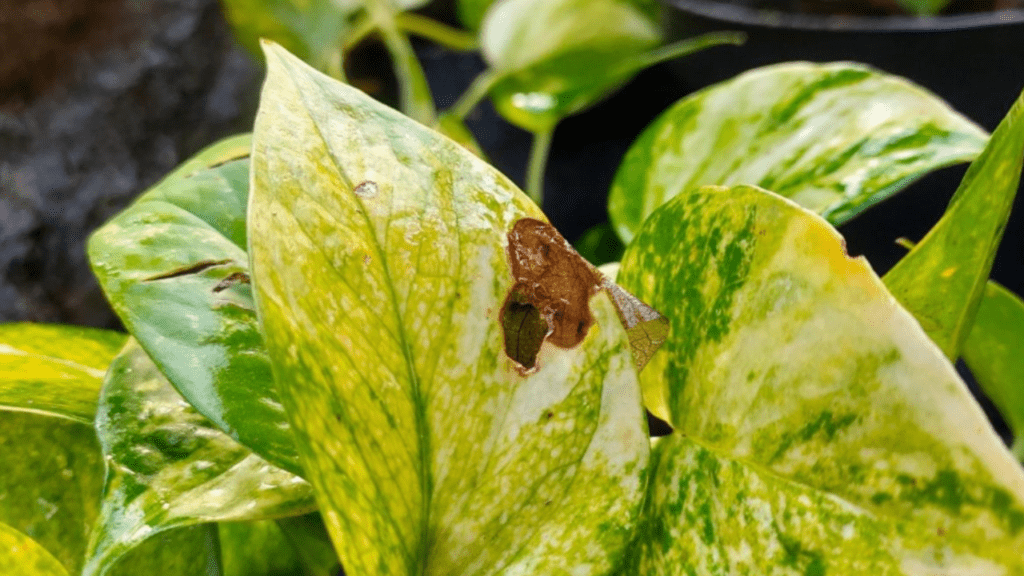
Ultimate Guide to Dealing with Pothos Leaves Turning Brown
If you’re tired of seeing your beautiful pothos plant withering away due to brown leaves, then this ultimate guide is exactly what you need. We’ll walk you through the common causes of pothos leaves turning brown and provide you with practical tips to keep your plant looking lush and healthy. Say goodbye to unsightly browning leaves and hello to a thriving, vibrant pothos plant with the help of this comprehensive guide. Don’t let your plant suffer any longer—take action now and give your pothos the care it deserves.
Table of Contents
ToggleUnderstanding the Problem
What Causes Pothos Leaves to Turn Brown?
Explain the various reasons behind the browning of pothos leaves.
Pothos leaves turning brown can be caused by a variety of factors, and it’s important to understand these reasons in order to address the issue effectively. Some common causes of browning pothos leaves include overwatering, underwatering, low humidity, inadequate light, and poor soil quality. Overwatering can lead to root rot, which in turn causes the leaves to turn brown and wilt. On the other hand, underwatering can lead to dry, crispy brown leaves. Low humidity levels can also cause the leaves to dry out and turn brown. Inadequate light can lead to sunburn and browning of the leaves, while poor soil quality can prevent the plant from receiving the nutrients it needs, resulting in brown leaves. By understanding these various reasons behind the browning of pothos leaves, you can take the necessary steps to address the issue and provide your plant with the care it needs to thrive. Don’t let your pothos suffer any longer—take action now and give it the attention it deserves.
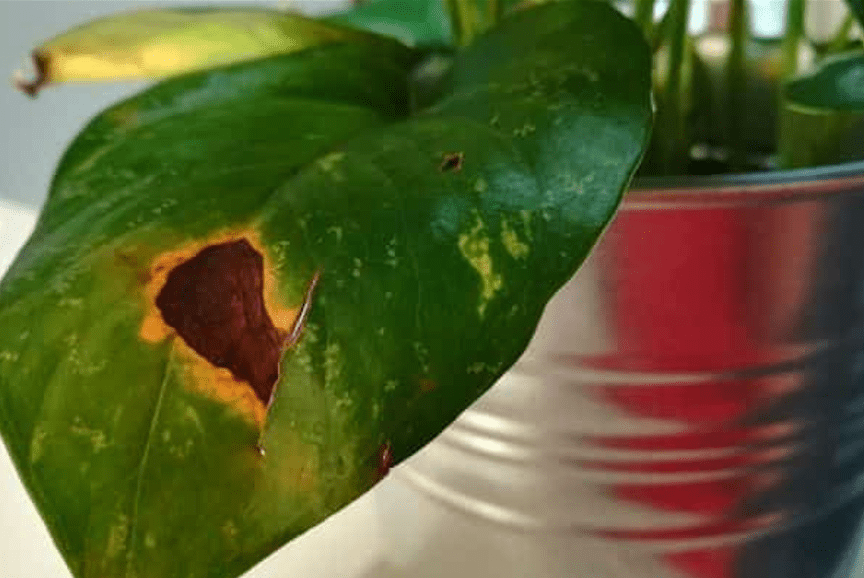
Include internal links to other related articles on your site.
If you notice your pothos leaves turning brown, it’s important to identify the cause and take action to remedy the situation. Overwatering is a common cause of browning pothos leaves, as it can lead to root rot and subsequent browning and wilting of the leaves. On the other hand, underwatering can result in dry, crispy brown leaves. Low humidity levels can also dry out the leaves and cause them to turn brown. Additionally, inadequate light can lead to sunburn and browning of the leaves, while poor soil quality can prevent the plant from receiving the necessary nutrients, resulting in brown leaves.
To address the issue, it’s important to understand the specific cause of the browning leaves and take appropriate action. This may include adjusting your watering schedule, increasing humidity levels, providing adequate light, or repotting your pothos in nutrient-rich soil. By understanding the various reasons behind the browning of pothos leaves, you can take the necessary steps to address the issue and provide your plant with the care it needs to thrive.
Don’t let your pothos suffer any longer—take action now and give it the attention it deserves. For more information on caring for your pothos plant, be sure to check out our other related articles on pothos care and maintenance. With the right care and attention, your pothos can thrive and continue to bring beauty to your home.
Signs and Symptoms of Brown Leaves
Detailed description of how brown leaves manifest in pothos plants.
Brown leaves on a pothos plant can be a sign of various issues, such as overwatering, inadequate light, or poor soil quality. It’s important to carefully examine the leaves to determine the specific cause of the browning and take appropriate action to address the problem. Overwatering can lead to root rot, which in turn causes the leaves to turn brown and wilt. Inadequate light can also lead to sunburn and browning of the leaves, while poor soil quality can prevent the plant from receiving the necessary nutrients, resulting in brown leaves. To address the issue, it’s important to understand the specific cause of the browning leaves and take appropriate action. This may include adjusting your watering schedule, increasing humidity levels, providing adequate light, or repotting your pothos in nutrient-rich soil. By understanding the various reasons behind the browning of pothos leaves, you can take the necessary steps to address the issue and provide your plant with the care it needs to thrive. Don’t let your pothos suffer any longer—take action now and give it the attention it deserves. For more information on caring for your pothos plant, be sure to check out our other related articles on pothos care and maintenance. With the right care and attention, your pothos can thrive and continue to bring beauty to your home.
Common Causes of Brown Leaves in Pothos
Watering Issues
Overwatering
Can lead to the browning of pothos leaves. When you overwater your pothos, the roots become waterlogged and are unable to absorb oxygen, which can cause the leaves to turn brown. It’s important to let the soil dry out between waterings to prevent this issue from occurring. Inadequate light can also lead to sunburn and browning of the leaves, while poor soil quality can prevent the plant from receiving the necessary nutrients, resulting in brown leaves. To address the issue, it’s important to understand the specific cause of the browning leaves and take appropriate action. This may include adjusting your watering schedule, increasing humidity levels, providing adequate light, or repotting your pothos in nutrient-rich soil. By understanding the various reasons behind the browning of pothos leaves, you can take the necessary steps to address the issue and provide your plant with the care it needs to thrive. Don’t let your pothos suffer any longer—take action now and give it the attention it deserves. For more information on caring for your pothos plant, be sure to check out our other related articles on pothos care and maintenance. With the right care and attention, your pothos can thrive and continue to bring beauty to your home.
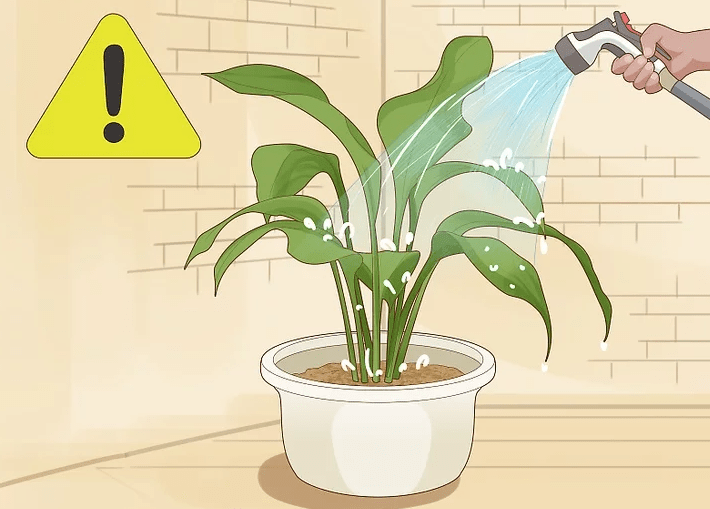
Underwatering
Can lead to browning of the leaves on your pothos plant. It’s important to recognize the signs of underwatering and take action to address the issue. Brown leaves are a clear indication that your plant is not receiving enough water, and this can be detrimental to its health. To prevent further damage, make sure to adjust your watering schedule and provide your pothos with the right amount of water it needs to thrive. By taking proactive steps to address the issue of underwatering, you can ensure that your pothos plant remains healthy and vibrant. Remember, your plant relies on you for its well-being, so be sure to give it the care and attention it needs to flourish. Don’t let underwatering damage your pothos—take action now and provide it with the water it needs to thrive. Your plant will thank you for it with beautiful, healthy leaves.
Humidity and Temperature
The role of humidity and temperature in plant health.
Humidity and temperature play a crucial role in the health of your plants. It’s important to understand how these factors can impact the well-being of your green friends and take the necessary steps to create an environment that promotes their growth and vitality. When it comes to humidity, plants like pothos thrive in environments with moderate to high humidity levels. If the air is too dry, it can lead to wilting and browning of the leaves. To combat this, consider using a humidifier or misting the leaves of your plant to increase the humidity levels. As for temperature, it’s important to keep in mind that extreme temperatures can also have a negative impact on your plants. Avoid placing them in areas with drafts or direct sunlight, as this can cause stress and damage to the leaves. By maintaining the right balance of humidity and temperature, you can ensure that your plants are happy and healthy. Remember, your plants rely on you to create the best environment for them, so be proactive in addressing these factors to promote their well-being. Your efforts will be rewarded with vibrant, thriving plants that bring joy and beauty to your home.
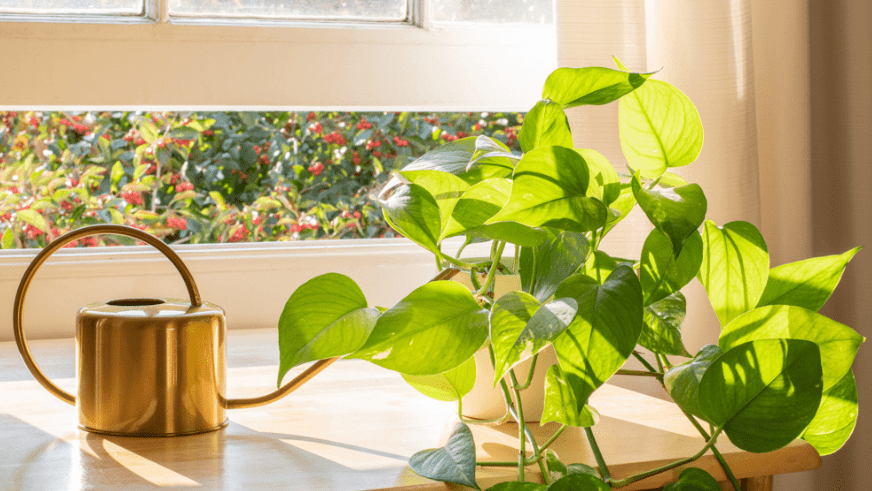
Ideal conditions for pothos plants.
Pothos plants thrive in specific conditions that are essential for their health and growth. The ideal conditions for pothos plants include a humid environment. If the air is too dry, it can lead to wilting and browning of the leaves. To combat this, consider using a humidifier or misting the leaves of your plant to increase the humidity levels. Additionally, temperature is an important factor to consider. Extreme temperatures can have a negative impact on your plants, so it’s important to keep them in a stable environment. Avoid placing them in areas with drafts or direct sunlight, as this can cause stress and damage to the leaves. By maintaining the right balance of humidity and temperature, you can ensure that your plants are happy and healthy. Remember, your plants rely on you to create the best environment for them, so be proactive in addressing these factors to promote their well-being. Your efforts will be rewarded with vibrant, thriving plants that bring joy and beauty to your home.
Lighting Problems
Insufficient light
Can have a detrimental impact on your plants, causing them to become weak and leggy. It’s important to provide your plants with the proper amount of light to ensure their growth and health. Consider placing your plants in a location where they can receive adequate natural light or invest in grow lights to supplement their light needs. By addressing this issue and providing your plants with the light they need, you can help them thrive and flourish. Remember, your plants are relying on you to create the best environment for them, so take the necessary steps to address insufficient light and watch as your plants grow beautifully and vibrantly.
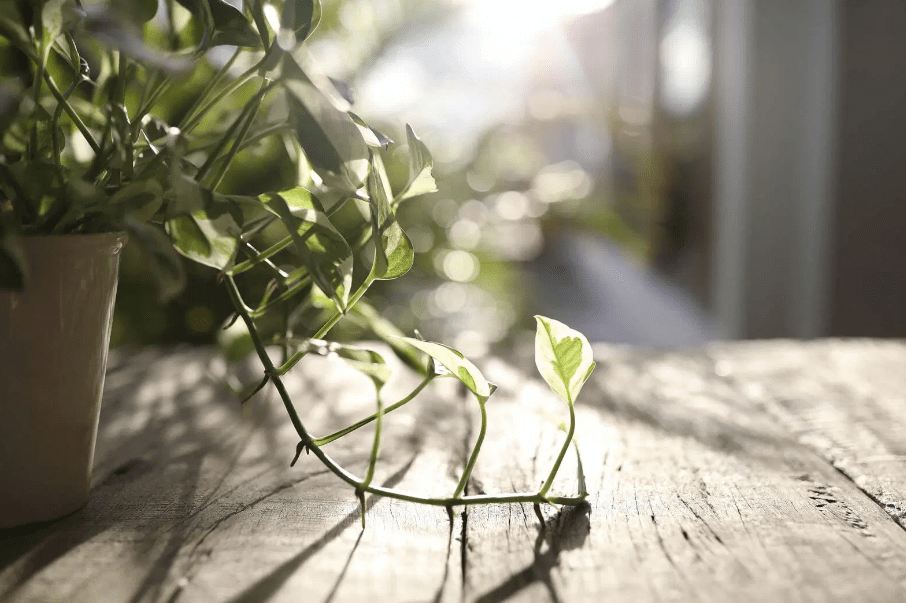
Excessive direct sunlight
Can also be harmful to your plants. Too much sun exposure can cause the leaves to become scorched and dried out, leading to wilting and overall plant distress. It’s important to monitor the amount of sunlight your plants are receiving and make adjustments as needed. Consider moving them to a location with partial shade or providing them with some form of protection from the harsh rays of the sun. By taking these proactive measures, you can ensure that your plants are not being overexposed to direct sunlight and are able to thrive in a more balanced environment. Your efforts to address excessive sunlight will result in healthier, happier plants that will bring beauty and joy to your home. Remember, your plants rely on you to create the best environment for them, so be proactive in addressing these factors to promote their well-being. Your efforts will be rewarded with vibrant, thriving plants that bring joy and beauty to your home.
Tips on providing the right lighting conditions.
It’s important to provide the right lighting conditions for your plants to thrive. Too much sun exposure can cause the leaves to become scorched and dried out, leading to wilting and overall plant distress. You should monitor the amount of sunlight your plants are receiving and make adjustments as needed. Consider moving them to a location with partial shade or providing them with some form of protection from the harsh rays of the sun. By taking these proactive measures, you can ensure that your plants are not being overexposed to direct sunlight and are able to thrive in a more balanced environment. Your efforts to address excessive sunlight will result in healthier, happier plants that will bring beauty and joy to your home. Remember, your plants rely on you to create the best environment for them, so be proactive in addressing these factors to promote their well-being. Your efforts will be rewarded with vibrant, thriving plants that bring joy and beauty to your home.
Soil and Nutrient Issues
Poor soil quality
Can have a negative impact on the health and growth of your plants. It’s important to address this issue by enriching the soil with organic matter, such as compost or fertilizer, to provide the essential nutrients that your plants need to thrive. By taking the time to improve the quality of your soil, you can create a more hospitable environment for your plants to grow and flourish. Additionally, consider testing the pH level of your soil to ensure that it is within the optimal range for the specific types of plants you are cultivating. Making these adjustments will lead to healthier, more robust plants that are better equipped to resist disease and pests. Remember, the foundation of a successful garden lies in the quality of the soil, so invest the time and effort to address any soil and nutrient issues to support the long-term health and vitality of your plants. Your plants will thank you for it with bountiful blooms and vibrant foliage.
Nutrient deficiencies
Can have a significant impact on your overall health and well-being. It’s important to ensure that you are consuming a balanced diet that provides all of the essential vitamins and minerals your body needs to function properly. If you are experiencing symptoms of nutrient deficiencies, such as fatigue or muscle weakness, it’s crucial to address these issues as soon as possible. Consider incorporating a variety of nutrient-rich foods into your diet, such as fruits, vegetables, whole grains, and lean proteins. Additionally, you may want to consider taking a multivitamin or specific supplements to help fill in any gaps in your nutrition. By taking proactive steps to address nutrient deficiencies, you can improve your overall health and well-being and prevent potential long-term health complications. Don’t underestimate the importance of proper nutrition – your body and mind will thank you for it.
Pests and Diseases
Common pests that affect pothos
Include spider mites, mealybugs, and scale insects. These pests can cause damage to the leaves and stems of the plant, leading to stunted growth and overall decline in health. It is important to regularly inspect your pothos plant for any signs of pest infestations and take appropriate measures to control them. You can use natural methods such as spraying the plant with neem oil or insecticidal soap, or you can use commercial insecticides if the infestation is severe. In addition to pests, pothos plants are also susceptible to diseases such as root rot and leaf spot. To prevent these diseases, make sure to water your plant sparingly and avoid overwatering, as well as providing good air circulation around the plant. If you notice any signs of disease, remove the affected parts of the plant and consider using fungicides to control the spread. By being proactive in addressing these common pests and diseases, you can ensure that your pothos plant remains healthy and vibrant. Don’t let pests and diseases take over – take action to protect your plant and keep it thriving.
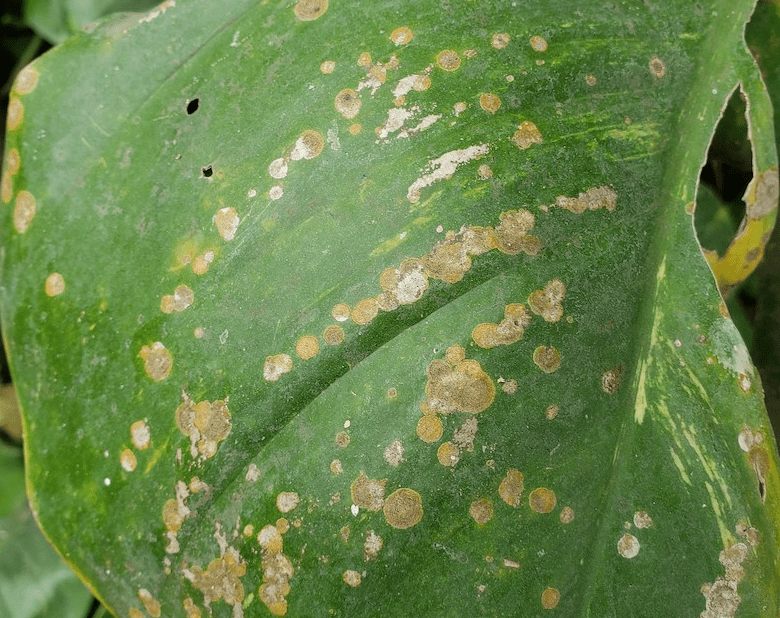
Identifying and treating fungal and bacterial infections.
Identifying and treating fungal and bacterial infections in plants is crucial in maintaining their overall health and vitality. By regularly inspecting your pothos plant for any signs of pest infestations and taking appropriate measures to control them, you are ensuring that your plant remains free from harmful invaders. Natural methods such as spraying the plant with neem oil or insecticidal soap can be effective in managing pest infestations, while commercial insecticides can be used for severe cases. In addition to pests, pothos plants are susceptible to diseases such as root rot and leaf spot. To prevent these diseases, it is important to water your plant sparingly and provide good air circulation around it. If you notice any signs of disease, removing the affected parts of the plant and using fungicides can help control the spread. By being proactive in addressing these common pests and diseases, you can ensure that your pothos plant remains healthy and vibrant. Don’t let pests and diseases take over – take action to protect your plant and keep it thriving.
How to Prevent Pothos Leaves from Turning Brown
Proper Watering Techniques
Proper watering techniques are essential for keeping your pothos plant healthy and vibrant. Overwatering can lead to root rot and other issues, while underwatering can cause the leaves to turn brown and wilt. To prevent this, it is important to water your plant sparingly and allow the soil to dry out slightly between waterings. This will help prevent waterlogged soil and ensure that the roots have access to the oxygen they need to thrive.
When watering your pothos, it is best to water the soil directly at the base of the plant rather than over the leaves. This will help prevent any moisture from sitting on the leaves, which can lead to fungal issues and browning. Additionally, using a well-draining potting mix and a pot with drainage holes can help prevent water from accumulating around the roots.
In addition to proper watering, it is important to provide good air circulation around your pothos plant. This can help prevent the buildup of moisture, which can lead to fungal issues and browning of the leaves. Placing your plant in a location with good airflow and avoiding overcrowding with other plants can help prevent these issues from occurring.
By following these proper watering techniques, you can help prevent your pothos leaves from turning brown and keep your plant healthy and thriving. Remember, a little bit of attention and care goes a long way in ensuring the success of your pothos plant.
Maintaining Ideal Humidity Levels
Is crucial for the health and growth of your plants, especially for indoor plants like pothos. Proper humidity levels can help prevent browning and drying of the leaves, ensuring that your plant stays healthy and vibrant. One way to maintain ideal humidity levels is by using a humidifier in the room where your plants are located. This can help create a more humid environment, especially during the dry winter months. You can also mist the leaves of your pothos plant with water to increase humidity around the plant. Another method is to place a tray of water and pebbles near the plant, allowing the water to evaporate and increase the humidity in the air. By maintaining ideal humidity levels, you can ensure that your pothos plant remains healthy and continues to thrive. Don’t let your plant suffer from dry and stagnant air – take the necessary steps to maintain proper humidity levels and watch your plant flourish.
Soil and Fertilization Best Practices
Are crucial for the health and growth of your plants. Using high-quality soil that is well-draining and nutrient-rich is essential for providing a strong foundation for your plants to grow. It’s important to choose a soil specifically formulated for the type of plants you are growing, whether it’s indoor or outdoor plants, flowering plants, or succulents. Additionally, fertilization is key to providing your plants with the necessary nutrients for healthy growth. It’s important to choose a fertilizer that is appropriate for the specific needs of your plants, whether they require more nitrogen, phosphorus, or potassium. Regular fertilization can help promote strong root development, vibrant foliage, and beautiful blooms. By following proper soil and fertilization best practices, you can ensure that your plants have the best possible environment to thrive and flourish. Don’t overlook the importance of these essential practices – your plants will thank you with their healthy and beautiful growth.
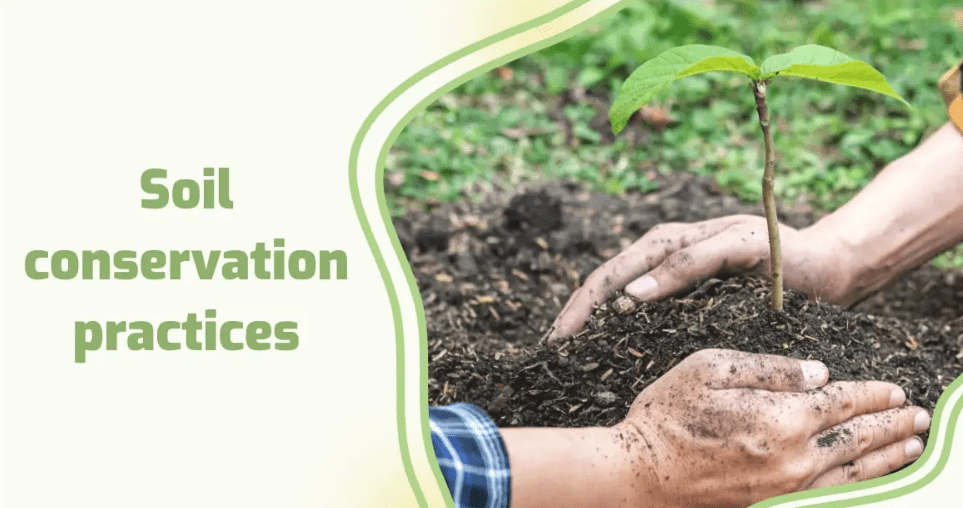
Regular Monitoring and Maintenance
Is crucial for the health and longevity of your plants. By regularly checking on your plants, you can identify any issues or problems early on and take the necessary steps to address them. This includes monitoring for signs of pests, diseases, and nutrient deficiencies. By catching these issues early, you can prevent them from causing serious harm to your plants. In addition, regular maintenance such as pruning, watering, and weeding is essential for keeping your plants healthy and thriving. It’s important to stay on top of these tasks to ensure that your plants have the best chance of success. By taking the time to monitor and maintain your plants, you can enjoy a beautiful and thriving garden that brings you joy and satisfaction. Don’t underestimate the power of regular monitoring and maintenance – it’s the key to a successful and vibrant garden.
In conclusion, dealing with pothos leaves turning brown requires a combination of proper watering, adequate sunlight, and regular pruning. By following the tips and advice provided in this guide, you can ensure that your pothos plant stays healthy and vibrant. Don’t let browning leaves discourage you – with the right care, your pothos plant can thrive and bring beauty to your home. So take the time to implement these strategies and watch your pothos plant flourish!
Frequently asked questions And Answer
Pothos leaves can turn brown due to overwatering, underwatering, low humidity, or exposure to direct sunlight. It’s important to identify the cause in order to properly address the issue.
To prevent browning, make sure to water your pothos plant only when the top inch of soil is dry, provide adequate humidity by misting the leaves or using a humidifier, and avoid placing the plant in direct sunlight.
If your pothos leaves are already turning brown, you can trim off the affected parts with clean scissors or pruning shears. It’s also important to address the underlying cause of the browning, such as adjusting the watering schedule or relocating the plant to a more suitable environment.
Yes, with proper care and attention, a pothos plant with brown leaves can be saved. By addressing the root cause of the browning and providing the plant with the right conditions, new healthy growth can be encouraged.
To promote healthy growth, make sure to provide your pothos plant with indirect sunlight, well-draining soil, and a consistent watering schedule. Regularly inspect the plant for any signs of pests or disease and address any issues promptly.
Yes, pothos plants can be easily propagated through stem cuttings. Simply take a cutting with several leaves and place it in water or moist soil until roots develop. This can help rejuvenate the plant and create new healthy growth.
Pothos leaves can turn brown due to environmental changes or seasonal fluctuations. It’s important to monitor the plant and make adjustments to its care as needed to ensure its health and vitality.
Common mistakes to avoid include overwatering, exposing the plant to direct sunlight, neglecting to provide adequate humidity, and using poor quality soil. By avoiding these mistakes, you can help prevent browning and promote thriving growth in your pothos plant.
